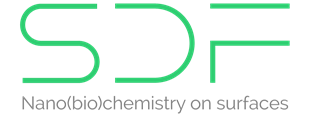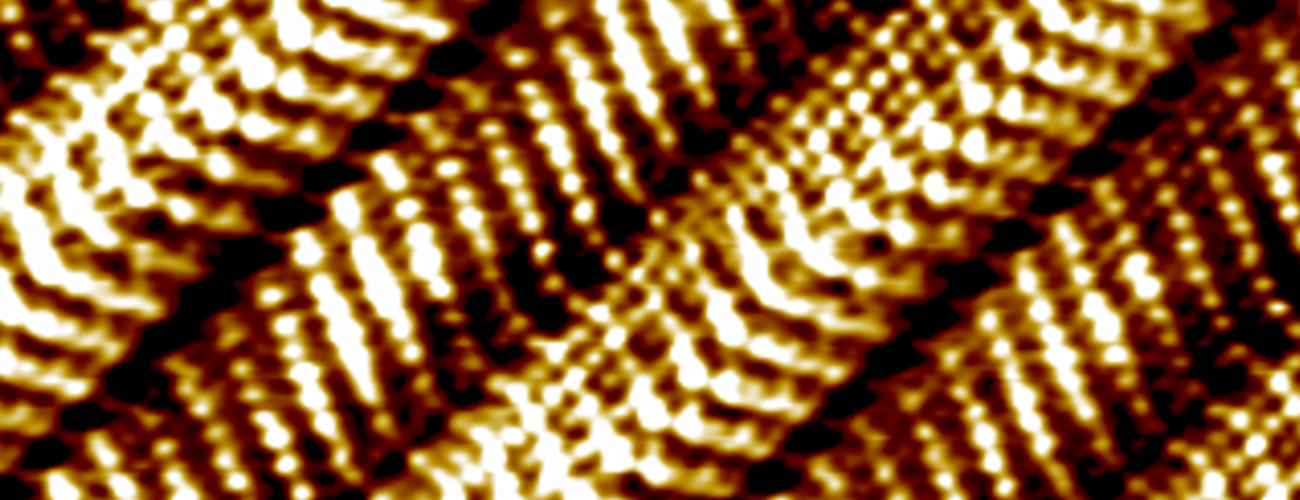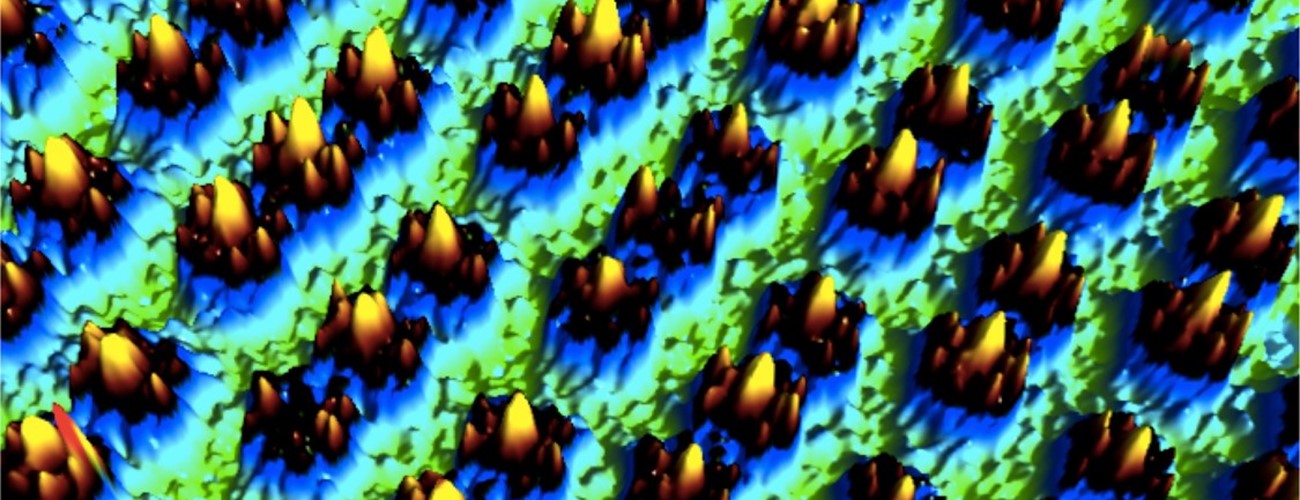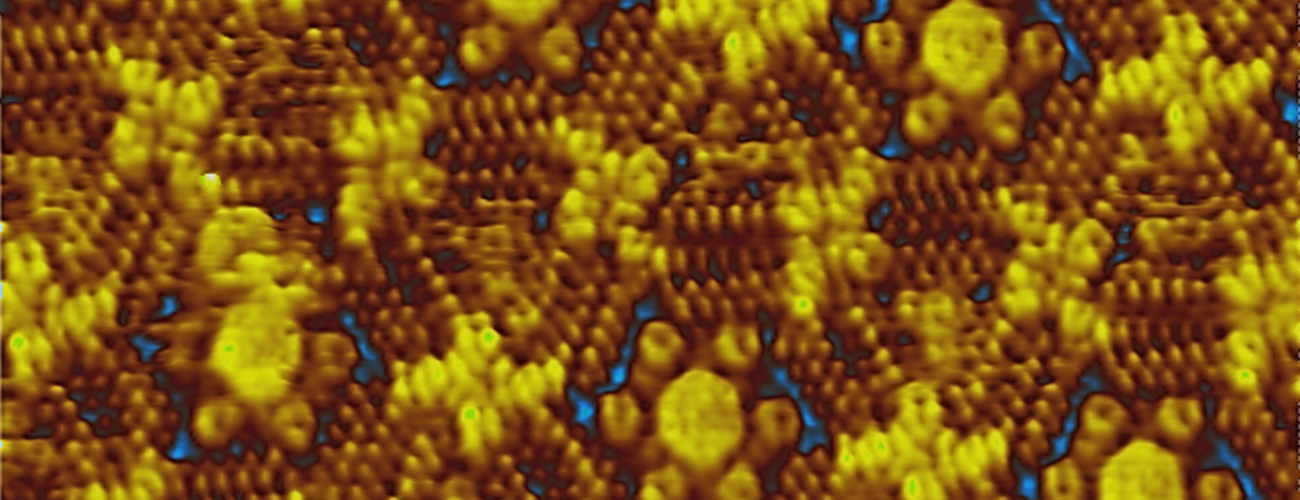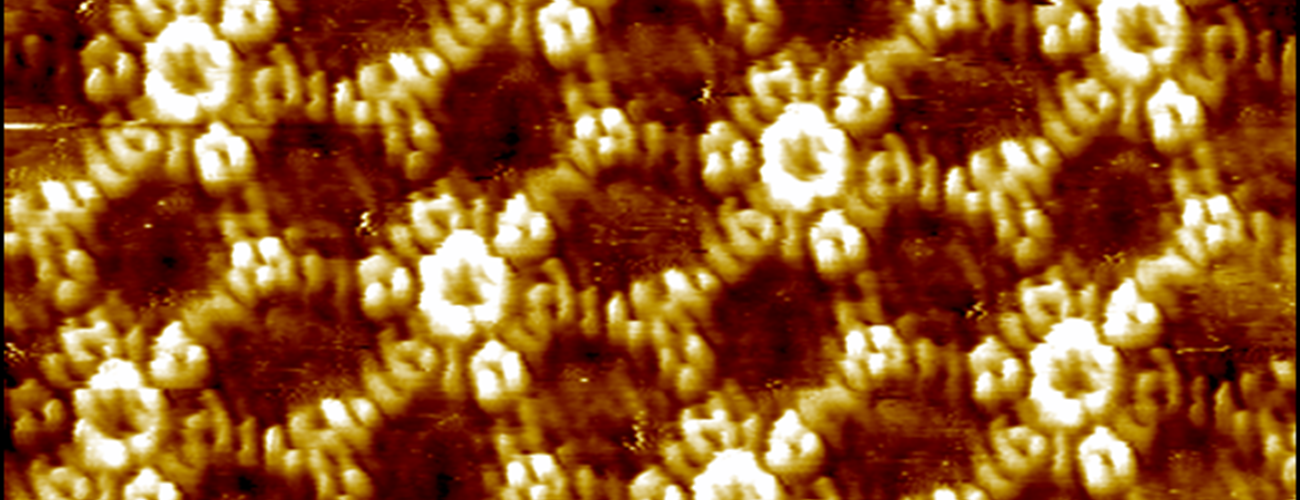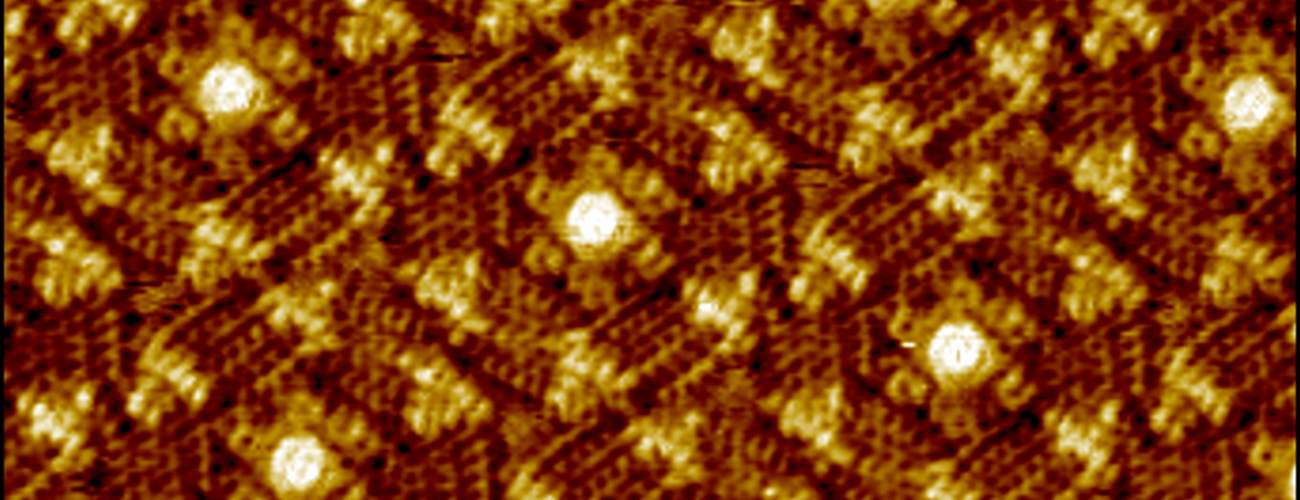Latest News
Chirality-induced spin selectivity
Proud to see this collaborative work, supported by the Horizon Europe MSCA DN "Cisse" network and FWO, published in JACS!
MOFs and SPM
Quite timely, given this year’s Nobel Prize: our review published in Chem.Soc.Rev. on metal–organic coordination systems and how to investigate them with scanning probe microscopy.
How DNA origami adsorb...
Finally revealed in Angewandte Chemie Int. Ed. how to control the adsorption symmetry of DNA origami just by adjusting the salt concentration
Welcome!


Nano(bio)chemistry on surfaces is the core activity of the group. To please our “seeing is believing” desire, we use high-resolution scanning probe microscopy techniques such as scanning tunneling microscopy and atomic force microscopy, sometimes combined with optical microscopy techniques, to unravel the beauty and function of multi-(bio)molecular assemblies on surfaces. The liquid-solid interface is our preferred playground.
Molecular self-assembly on surfaces is a central research theme, with a focus on the relation between structure and function. Research activities cover a broad range of topics such as two-dimensional crystal engineering (e.g. formation of nanoporous surfaces, chirality at interfaces), templating, dynamics and on-surface reactivity. We investigate not only the self-assembly of low molecular weight molecules, but also polymers and biomolecules. In addition to the non-covalent supramolecular chemistry approach, we recently put more on more emphasis on the functionalization of surfaces using covalent chemistry. Whatever the functionalization approach, nanostructuring is the keyword: we aim at spatially controlling the ordering of molecules on surfaces, via bottom-up approaches as well as nanolithography. These approaches are not only ideal to decorate and functionalize “traditional” surfaces such as “graphite and gold, but bring clear advantages for the controlled functionalization of 2D materials (graphene, MoS2, …). A recent development is the on-surface synthesis of 2D polymers, as well as the investigation of their formation in real-time with submolecular resolution.
All of this is made possible thanks to team of enthusiastic researchers, who thrive in a stimulating environment. I aim at bringing together researchers with different scientific and cultural backgrounds (physical chemists, synthetic chemists, biochemists, physicists, engineers), and to activate them to work together, to exchange ideas, and to learn from each other. This strong believe in the power of collaboration is exemplified by the many national and international collaborations. The research team is very well equipped and moved in 2015 to state-of-the-art research facilities (Leuven Chem&Tech and Leuven Nanocentre).
Interested? Feel free to get a flavour of our research activities by browsing the different research topics or the publication list.
You want to join this international team? Contact me! Click here for short CV.
Kind regards,
Steven De Feyter
